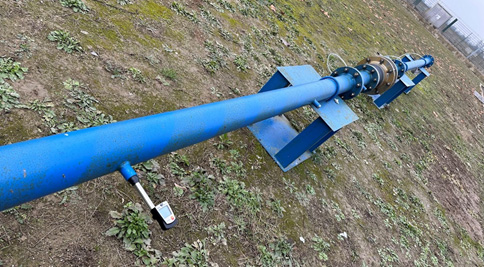DEFLAGRATION PREVENTION AND PROTECTION METHODS
In the field of industrial safety, particularly under the ATEX directive, protective systems play a key role in preventing dust deflagration or protecting against it.

Dust Cloud Formation Prevention or Mitigation Methods
Although it may not be possible to completely eliminate the formation and dispersion of dust clouds, careful design and layout of plant and equipment can often reduce the potential for dust cloud formation and minimise its volume.
Methods to minimise the formation of dust clouds include:
- Reducing dust fall heights to minimise dispersion.
- Protecting dust from external airflows.
- Using small, slowly rotating equipment to minimise fine dust production.
- Agglomerating particles to increase their size, possibly spraying water or a wetting agent.
- Preventing dust accumulation from external emissions and do not allow dust layers to build up on process equipment, building floors and structural elements (beams, bracing, overhangs, etc.).
Protective Systems for Dust Explosion Prevention
Methods for dust safety and preventing dust deflagration:
- Dust Cloud Formation Prevention: this involves reducing the generation or dispersion of dust clouds. For instance, using cyclones or bag filters to feed the solids into the silo can significantly decrease dust cloud formation compared to free-falling methods.
- Inertisation Strategy: this prevention method focus on reducing the concentration of oxidising agents. Inertisation involves introducing inert gases to reduce oxygen concentration.
- Dilution Strategy: This method focus on reducing the concentration of combustible dust. Dilution uses air to lower the concentration of combustible dust.
Protective Systems for Dust Explosion Protection
Most commonly used methods of protection against deflagration and for dust safety:
- Venting: Allowing explosive pressure to safely escape.
- Suppression: Rapidly extinguishing a developing explosion.
- Containment: Ensuring that equipment can withstand the pressure generated by an explosion.
- Isolation: Preventing the spread of explosions to adjacent plant areas.
- Spark Detection and Extinguishing Systems: Identifying and neutralising potential ignition sources.
- Secondary Explosion Prevention: Implementing measures to avoid secondary explosions.
Practical Examples of Protective Systems for Dust Cloud Prevention or Protection
For example, when pneumatically conveying solids into a silo, it is better to take the solids into a cyclone or bag filter located above the silo and slowly feed the solids into the silo through a rotary valve rather than allowing them to fall freely into the silo. This minimises the formation of dust clouds, while free-falling filling causes much of the space above the deposited solids to be filled with a dust cloud, which could have an explosive concentration.
Another example where the formation of dust clouds occurs is in belt conveyor systems. Dust is generated almost exclusively at two points: loading and unloading. The formation of dust clouds can be minimised by the correct design of the transfer points, taking into account factors such as the use of chutes and collection systems to remove fine dust. For pneumatic conveying systems, friction and the consequent formation of dust clouds can be minimised by selecting dense phase (low velocity) conveying systems instead of a dilute phase (high velocity) system. Dense phase conveying is gentler and results in fewer fine parts.